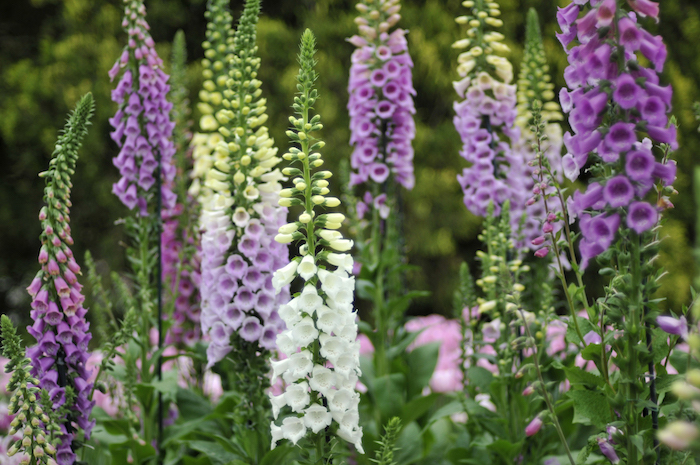View from the Garden: Bolting Biennials – A Surprise in Your Garden!

This last week, I bought six parsley plants that had “gone to seed.” Why’d I get them, these thin-stalked bunches with pale yellow or white groupings of flowers atop individual stems that share a primary branch?
They’re pretty, for one thing, but parsley is also a biennial. The previous year, the plants were clumps of lovely dark green edible leaves. This spring they finished their biological cycle and “bolted”—the term for when certain plants begin to produce seed. Other vegetables are biennial and will also bolt in the spring if left in the garden during the winter: carrots, beets, Brussels sprouts (imagine the flowers on those babies!), cabbage, leeks, onions, parsnips and onions.
You may be familiar with the gardening terms annual (a plant that completes its life cycle within one growing season) and perennial (a plant that returns in perpetuity—think daffodils). Biennials are a bit trickier. You plant them (and harvest them, if they’re veggies or herbs) in one season, and the following year they bolt, producing flowers and seeds, and die. Why, then, plant them at all?
Because of the extended time it takes for biennials to reach the flowering stage, the blooms are often larger and have a more complex structure. The “bolt” (or the elongated stem that shoots up) can be tall and provide a wonderful focal point or backdrop to a garden landscape. And they seed themselves, which has its advantages (cost-saving, for one thing).
The common foxglove (Digitalis purpurea) is my favorite of the biennial flowers. I planted some many years ago and now have them all over my garden beds. In spring I see tiny plants that, during the summer, grow into sizeable green-only plants which bloom the following year, deposit seeds and repeat the cycle. To encourage this, it’s best if the soil surrounding the bolting foxgloves isn’t covered with mulch or leaf matter. (Often, the mother plant will last another cycle, but that’s not something you can count on.) If all has gone according to plan, you may find groupings of small foxglove plants and must be very careful weeding in the spring. The new shoots are incredibly tiny and I’d recommend leaving weeds longer than you might like in order to recognize the foxgloves when they finally do become larger.
Other types of foxglove are neither biennial nor reliable seed producers. Treat them as annuals and, if you find a baby foxglove plant the next year, you have a present! But remember, all foxgloves are poisonous. If you have children, if might be best to avoid planting them.
My second favorite species of biennial is the Russian hollyhock (Alcea rugosa). It’s called, by those of us from the plains states, “the outhouse plant.” Indeed, some of my relatives back on the farm had hollyhocks blocking the view of their backyard commode. Russian hollyhocks can easily reach between five and six feet tall if grown in the right conditions. The plant has delicate yellow flowers and is rust resistant (in this case, “rust” refers to a type of orange fungal infection that can slow growth and even cause a plant to wither or die).
Biennials are a great investment for any gardener. They save you the time of replanting in the spring and leave gifts of seeds that, given the proper variables, will grow into beautiful new plants. Generally,
when vegetables and herbs bolt they’re no longer good eating. But the flowers are so gorgeous, who really cares?
Jeanelle Myers is a professional gardener, landscaper and consultant. For gardening discussion you can call her at 631-434-5067. jeanellemyersfinegardening.com



